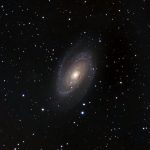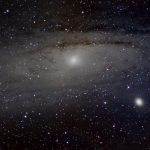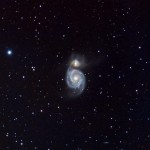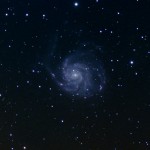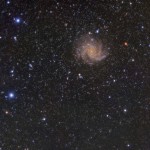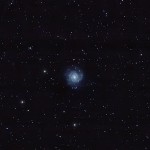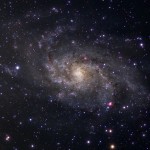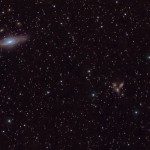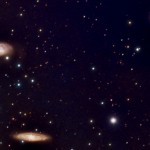
Galaxies are massive formations of stars, planets, dust, nebulae, and dark matter that are bound by gravity. Our own Milky Way is a galaxy, and all of the individual stars, nebulae, and clusters that are seen in these photos are contained with in the Milky Way. Galaxies are located vast distances away from us on Earth, ranging from a couple of million light years, like our large neighbor, Andromeda, to billions of light years. That distance makes it usually impossible to identify individual stars in other galaxies, and instead we see an overall impression of the dust and mass of the galaxy being imaged. Individual stars in the photo are in our own Milky Way and in front of the image of the galaxy as we peer out of the Milky Way. The most distant object we have photographed so far lies somewhere around 170 million light years from Earth.
It is estimated that there are close to 200 billion galaxies in the observable universe, each made up of billions or even trillions of stars. Galaxies come in many shapes and sizes, but most fall into the categories of elliptical, spiral, or barred spiral. The diagram below shows some of the most common shapes and classifications of galaxies, and is referred to as the Hubble Sequence since it was chronicled by Edwin Hubble in 1936.

IMAGES FROM THE OBSERVATORY:
- M81: Bode’s Galaxy
- M33: Triangulum Galaxy
- M31: Andromeda Galaxy
- M51: Whirlpool Galaxy in HaLRGB
- M106 HaLRGB
- Messier 101, Pinwheel Galaxy w/ HaRGB data
- M51: Whirlpool Galaxy
- M81 & M82
- NGC 6946: Fireworks Galaxy
- M63: Sunflower Galaxy
- M74
- M64: Black Eye Galaxy
- M101: Pinwheel Galaxy
- M33: Triangulum Galaxy
- NGC7331 & The Deerlick Group
- M31: Andromeda Galaxy
- Leo Triplet of Galaxies

